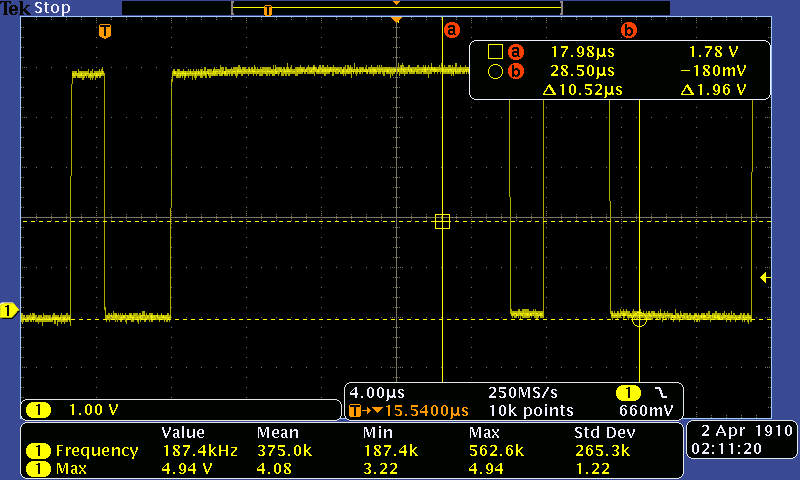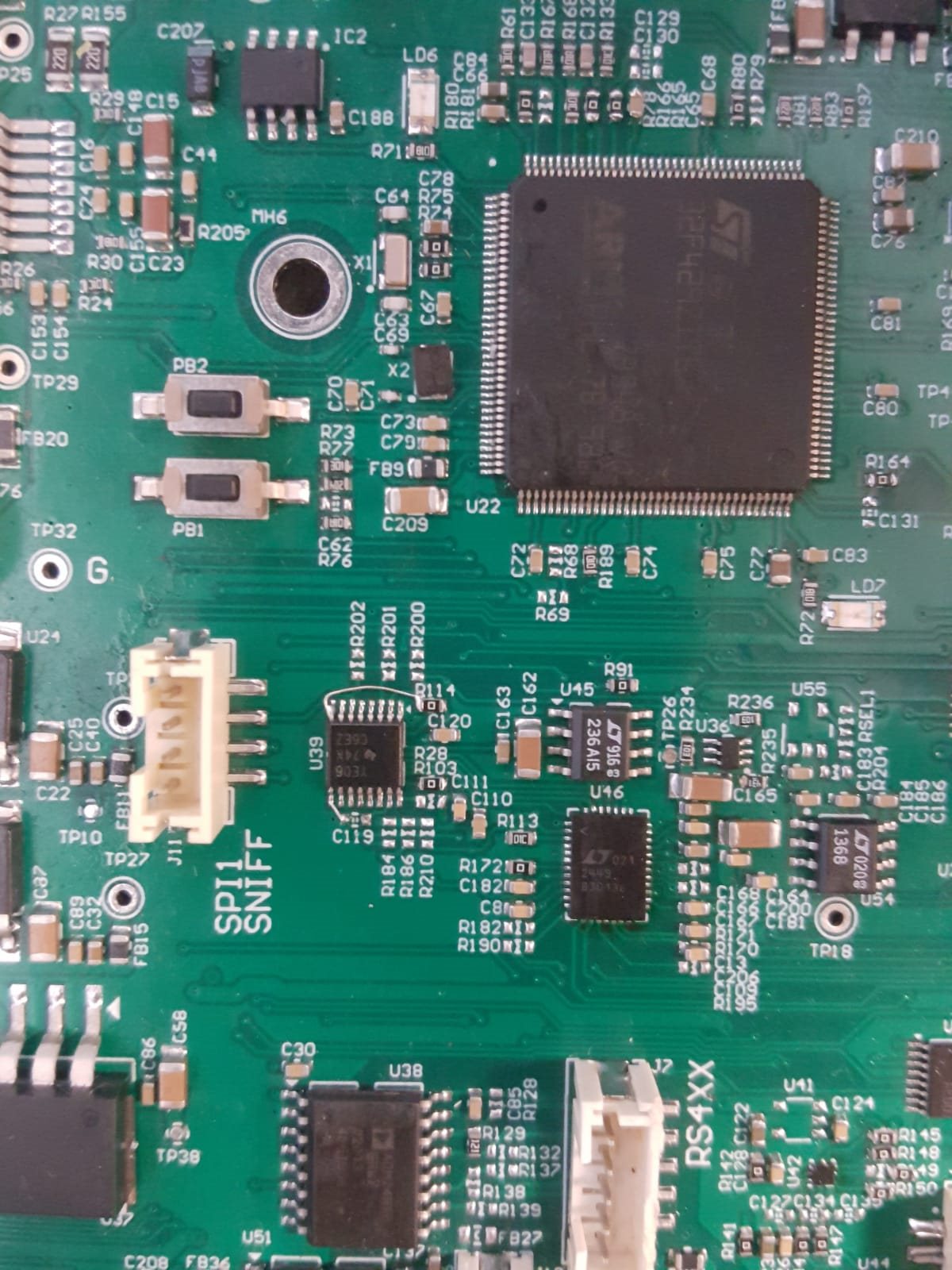Hello,
we have a system with 2 ADC and a MCU
* ADS7047 (runs at 3.3V) named as ADC 2
* LTC2449 (runs at 5V) named as ADC1
* STM32 MCU (runs at 3.3V but is 5V tolerant)
we placed a level converter TXB0106 between ADC1 and the rest of the 3.3V side but SPI signals are not being level translated properly. Below is the schematic of the related part.
Without the level translator everything works fine (when we place a resistor divider on the MISO signal) so rest of the system is verified. We would be happy if you share your thoughts regarding this problem.






